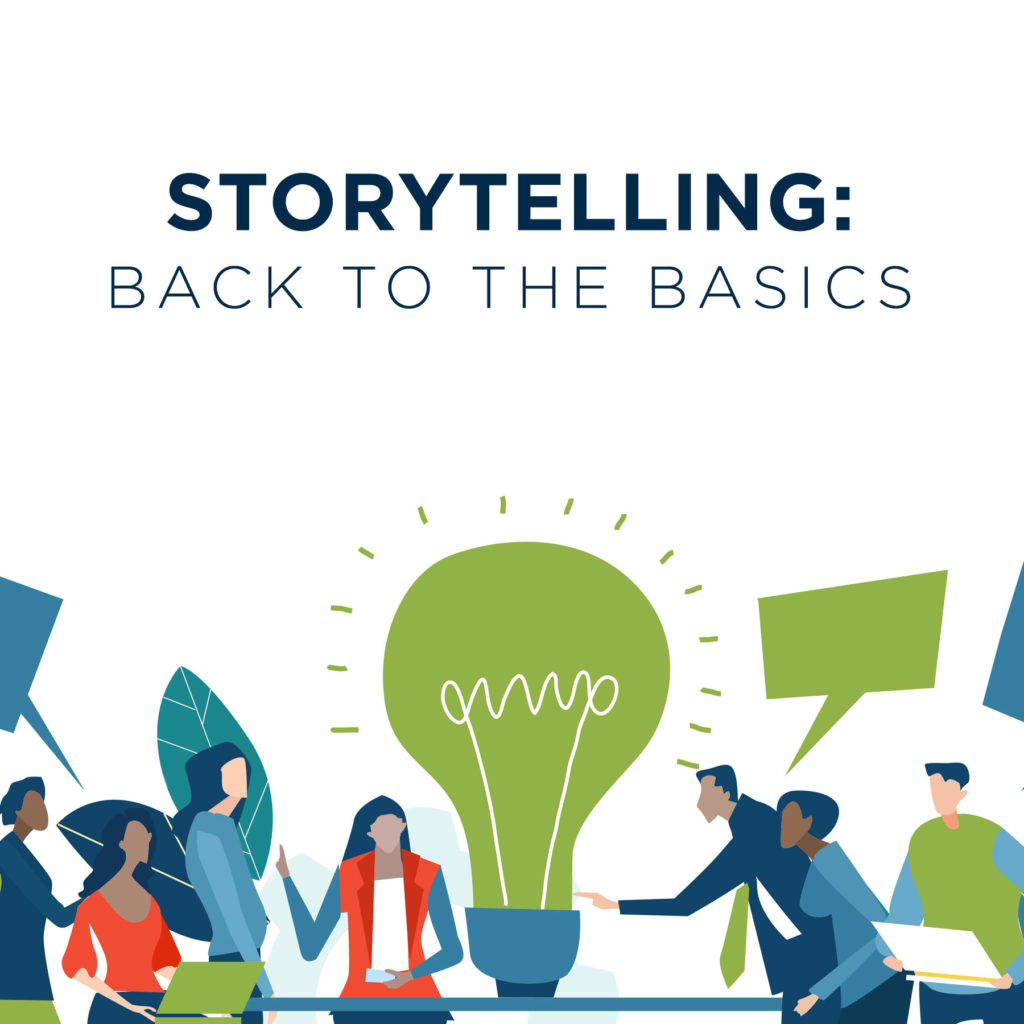Once upon a time, in a land far, far away… people told stories. In fact, storytelling has always been a part of human history and has a place in every culture and society. It is a powerful tool for creating human connection and influence by delivering the right message at the right time. By definition, a story is an account of imaginary or real people and events told for the purpose of engaging, educating, or entertaining. A story is a means of transferring information, preserving knowledge and experience, and instilling values.
Telling a good story requires some skill and creativity—and practice. There are, however, a few important guiding principles of effective, engaging stories that can help you craft a solid narrative:
- CLEAR, CONCISE MESSAGE – A good rule of thumb is to focus on one key message and boil it down to a single compelling point. Use the guiding principle that “less is more.” Don’t overcomplicate it or you’ll make it difficult for your audience to follow and risk losing their attention.
- RELEVANT TO THE SPECIFIC AUDIENCE – Understand what your audience knows and cares about so you can craft a story that is valuable to them. Humans naturally care more about people, places, and things we can relate to. Remember, if your story doesn’t resonate, it won’t serve a purpose.
- CONTAINS DRAMATIC TENSION – The unexpected—and its resolution—often contains an insight, something people can learn from. Keep your audience wanting to know what happens next by building dramatic tension. Adding emotion into your story is one effective way to do this.
- DETAILS & FACTS MAKE IT INTERESTING – Adding details to your story makes it vivid and helps people paint a mental picture, which enables them to get on board with your message. Include information that answers who, what, when, where, why, and how—but don’t add too much detail of the wrong kind or you run the risk of detracting from the point you need to make.
- SIMPLE STRUCTURE – At its most basic level, your story should: introduce the characters and setting (exposition), present the problem or conflict (rising action) and how the characters deal with it (climax and falling action), and describe the resolution. Narrative arc is the term used to describe a story’s full progression, which brings us to our next point…
It is generally accepted that there are about 6-8 basic storytelling structures or narrative arcs that all stories typically follow, which helps us tell stories in a way that audiences recognize and connect with. In his book The Seven Basic Plots, journalist Christopher Booker outlines the seven structures all stories follow: Overcoming a Monster, Rags to Riches, Voyage and Return, The Quest, Comedy, Tragedy, and Rebirth. This infographic from QuidCorner does a fantastic job illustrating each of them and describing how they can be used to enhance your presentations.
Storytelling—if done right—can be an effective means of communicating your key message. Our next article in this series will dive into why we use stories and the ways they can be effectively employed to help achieve business objectives. To be continued…



